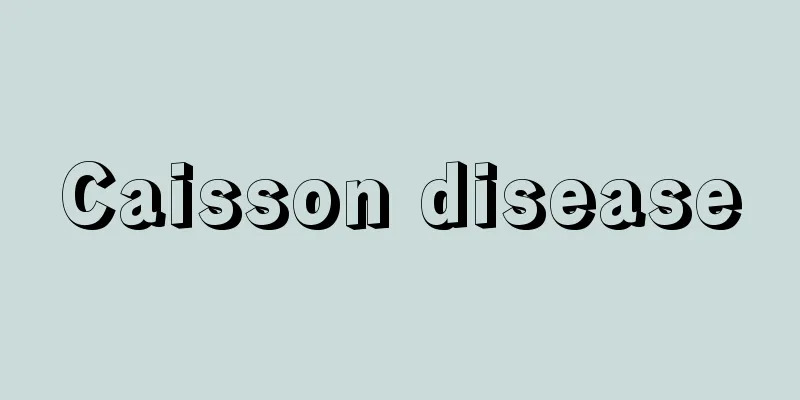Rokumeikan

|
A Western-style building built as an international social gathering place in the early Meiji period. It was located on the former site of the Satsuma Domain's costume mansion at Yamashitamon, Uchisaiwai-cho, Kojimachi-ku, Tokyo (next to the Imperial Hotel in Uchisaiwai-cho, Chiyoda-ku). Inoue Kaoru, who became Minister of Foreign Affairs in 1879 (Meiji 12) and engaged in treaty revision negotiations, tried to encourage Western countries to recognize Japan's modernization by westernizing Japan's systems, cultural artifacts, and customs, and to promote the negotiations, together with Ito Hirobumi and others. As part of this, Rokumeikan was built as a place to entertain and lodging foreign dignitaries, aiming to westernize social gatherings among the upper class. Construction began in January 1881, based on a design by the Englishman Conder, and the two-story brick main building and annex in the neo-baroque style had a total floor area of 1,450 square meters, costing a total of 180,000 yen, and was completed in July 1883. The Rokumeikan was named after the "Poem of the Little Elegant Rokumei" in the Book of Songs, which means to welcome guests, and the opening ceremony was held on November 28th. Gorgeous garden parties, balls, costume parties, and women's charity events (bazaars) were frequently held, which became symbols of the trend toward Westernization, and represented the so-called Rokumeikan era. However, the distortions of rapid modernization were also embodied, and the manic and superficial Westernization fever typified by costume balls drew public scorn. When Inoue failed to revise the treaty in 1887, criticism of the Westernization policy intensified, and the Rokumeikan era came to an end. The building was loaned to the Peerage Hall in 1890, sold in 1894, and renamed Peerage Hall in 1898. After 1933 (Showa 8), it was used by the Japan Conscription Insurance Company, the Domestic Savings Bank, and others, before being demolished in 1941. The front gate was also destroyed by fire during World War II. [Mamoru Wada September 19, 2018] "The Inoue Kaoru Biography Compilation Committee ed., "The World's Greatest Inoue Biography 3" (1934, Naigai Shoseki / Reprint edition, 1968, Hara Shobo, 2013, Matsuno Shoten)" ▽ "Kasumi Kaikan compiled and published, "The One Hundred Years of the Peerage Hall" (1975)" ▽ "Muramatsu Teijiro, "The History of Modern Japanese Architecture" (1977, NHK Books / Iwanami Gendai Bunko)" ▽ "Isoda Koichi, "The Genealogy of the Rokumeikan" (1983, Bungeishunju / Kodansha Bunko)" ▽ "Tomita Hitoshi, "Rokumeikan" (1984, Hakusuisha)" [References] | | |Uchiyamashita-cho, Kojimachi-ku (present-day Uchisaiwai-cho, Chiyoda-ku, Tokyo). "Photographic Edition of Tokyo Scenery" (1893 (Meiji 26)) Owned by the National Diet Library . Rokumeikan Source: Shogakukan Encyclopedia Nipponica About Encyclopedia Nipponica Information | Legend |
|
明治初期の国際的社交場として建てられた洋館。東京府麹町(こうじまち)区内幸(うちさいわい)町山下門の元薩摩(さつま)藩装束(しょうぞく)屋敷跡(千代田区内幸(うちさいわい)町、帝国ホテルの隣地)にあった。1879年(明治12)外務卿(きょう)に就任して条約改正交渉に取り組んだ井上馨(いのうえかおる)は、伊藤博文(いとうひろぶみ)らとともに、制度・文物・習俗を欧風化して欧米諸国に日本の開化を認めさせ、交渉を促進しようとした。鹿鳴館はその一環として、上流社会の社交の欧化を図り、外国貴賓の接待・宿泊施設として建設されたものである。イギリス人コンドルの設計により1881年1月着工、ネオ・バロック様式を基調とした煉瓦(れんが)造り2階建ての本館と付属施設の総建坪1450平方メートル、総工費18万円をかけ、1883年7月竣工(しゅんこう)した。『詩経』の「小雅鹿鳴の詩」、迎賓接待の意から鹿鳴館と命名、11月28日に開館式を行った。華やかな園遊会、舞踏会、仮装会、婦人慈善会(バザー)が頻繁に開かれ、それらは欧化主義の風潮のシンボルとなり、いわゆる鹿鳴館時代を現出した。しかし急速な近代化のゆがみも集約されており、仮装舞踏会に典型的にみられる狂的で皮相な欧化熱は世のひんしゅくを買った。1887年井上が条約改正に失敗するや、欧化政策に対する批判も強くなり、鹿鳴館時代も終わった。建物は1890年華族会館に貸与、1894年に払い下げられ、1898年には名称も華族会館と変わった。さらに1933年(昭和8)以降、日本徴兵保険会社、内国貯金銀行などが使用し、1941年取り壊された。表門も第二次世界大戦中に戦災で焼失した。 [和田 守 2018年9月19日] 『井上馨侯伝記編纂会編『世外井上公伝3』(1934・内外書籍/復刻版・1968・原書房、2013・マツノ書店)』▽『霞会館編・刊『華族会館の百年』(1975)』▽『村松貞次郎著『日本近代建築の歴史』(1977・NHKブックス/岩波現代文庫)』▽『磯田光一著『鹿鳴館の系譜』(1983・文芸春秋/講談社文芸文庫)』▽『富田仁著『鹿鳴館』(1984・白水社)』 [参照項目] | | |麹町区内山下町(現在の東京都千代田区内幸町)。『東京景色写真版』(1893年〈明治26〉)国立国会図書館所蔵"> 鹿鳴館 出典 小学館 日本大百科全書(ニッポニカ)日本大百科全書(ニッポニカ)について 情報 | 凡例 |
Recommend
Chief guardian - Omokōken
...Normally, Noh requires two actors and Kyogen r...
Ryuho
A haiku poet of the early Edo period. Nonoguchi. ...
Waste paper (recycled paper) - Koshi (English spelling) wastepaper
This paper is paper that was once sold commerciall...
Ouyang Xun
A representative calligrapher of the Tang Dynasty...
Metal corrosion
…There was a time when corrosion was considered t...
stomach cancer
Concept Gastric cancer is an epithelial malignant ...
Psittacula cyanocephala (English spelling)
…Parakeet [Takashi Saito]. . . *Some of the termi...
Compulsory norms - Compulsory norms
A norm that determines certain violations as illeg...
Falling Flowers
An American film produced in 1919. Original title:...
Coro
…Many folk songs from around the world are polyph...
He Shao-ki
A calligrapher from the late Qing Dynasty in Chin...
Candida albicans
…It is most likely to occur on the buccal mucosa,...
Parnasse contemporary (English)
…This is a translation of the term l'école pa...
Kanenao Urabe
?-? A Shintoist and poet of the Kamakura period. ...
Public interest
The public interest literally means the public in...









